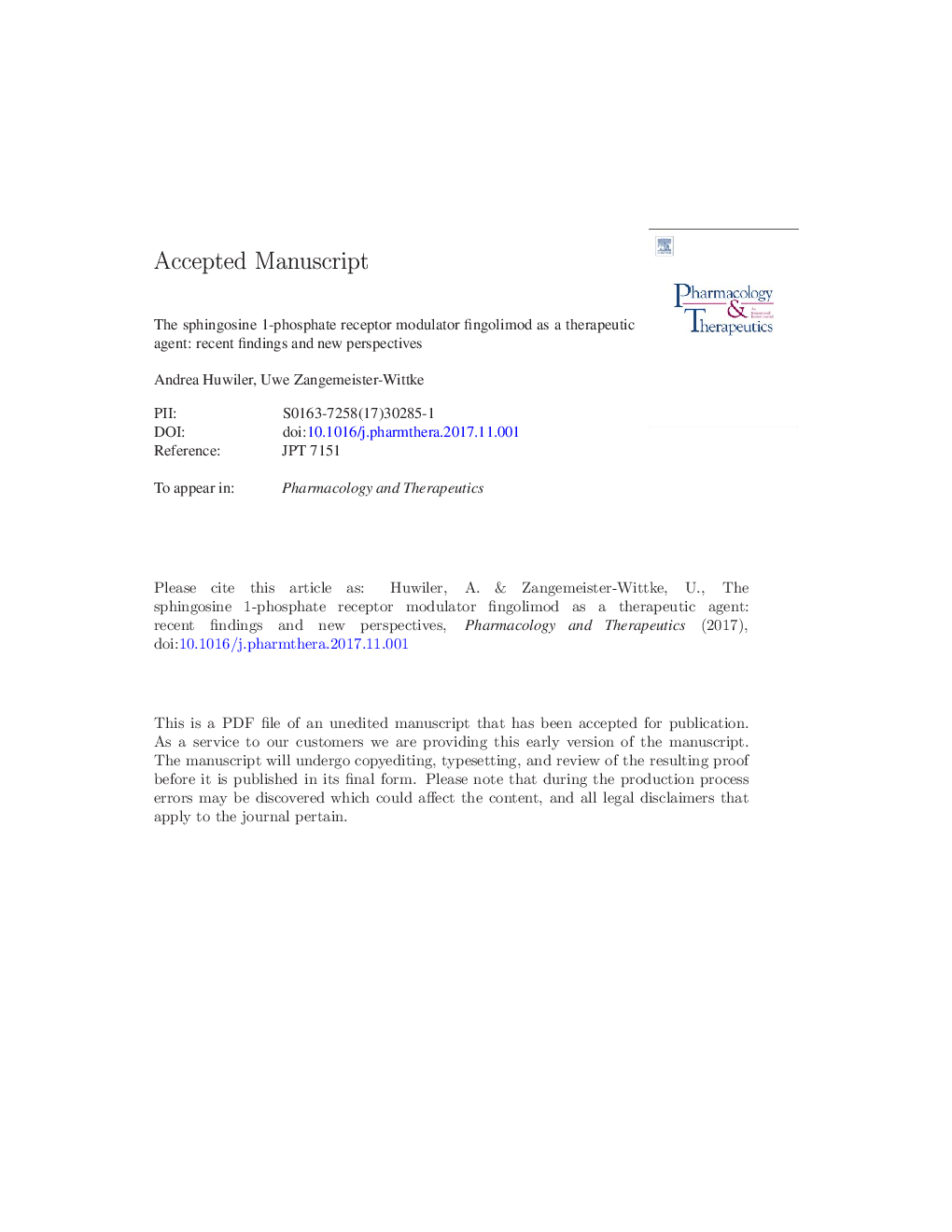| Article ID | Journal | Published Year | Pages | File Type |
|---|---|---|---|---|
| 8536841 | Pharmacology & Therapeutics | 2018 | 56 Pages |
Abstract
The immunomodulatory drug fingolimod (FTY720, GilenyaR) was approved for oral treatment of relapsing-remitting multiple sclerosis, due to its impressive efficacy and good tolerability. Pharmacologically, it acts as an unselective agonist of sphingosine 1-phosphate receptors (S1PR) and as a selective functional antagonist of the S1P1 subtype by induction of receptor downregulation. Since S1P1 is crucial for the regulation of lymphocyte trafficking, its downregulation causes redistribution of the immune cells to secondary lymphoid tissues, resulting in the depletion from the circulation and hence immunosuppression. Numerous preclinical studies have since been performed with the aim to increase the spectrum of potential indications for fingolimod with emphasis on other autoimmune disorders and diseases associated with inflammation and uncontrolled cell proliferation, including cancer. As an alternative to fingolimod, novel S1PR modulators with a more selective receptor activation profile and improved pharmacokinetic performance and tolerability have also been developed. Preclinical and clinical studies are ongoing to investigate their therapeutic potential. This review discusses the most relevant preclinical and clinical findings from S1PR-targeting and from less-well defined off-target effects reported in the literature, and reveals perspectives for using fingolimod and functionally-related derivatives and new formulations in the management of an increasing number of diseases.
Keywords
RRMsERKHDACPP2ASIRSFTY720CPLFingolimodEAET1DcPLA2LPATLRT2DMecp2MMFS1PPPMSisp-1DAMPsSGPL1SPP1CTLS1P lyaseSPMSHDLPECAMTRPM7CerSTNBSCYP450SphKBDNFexperimental autoimmune encephalomyelitisSphingosine kinasesphingosine 1-phosphateamyotrophic lateral sclerosisTrinitrobenzene sulfonic acidlysophosphatidic aciddamage-associated molecular patternsCecal ligation and punctureCSAALSToll-like receptorCNStype 1 diabetes mellitusType 2 diabetes mellitusT helper cellNatural killer cellsceramide synthaseSystemic inflammatory response syndromeCytochrome P450central nervous systemCyclosporine AAdverse eventsPharmacologybrain-derived neurotropic factorcytosolic phospholipase A2Cytotoxic T lymphocytesSystemic lupus erythematosusSLEhigh density lipoproteinsecondary progressive multiple sclerosisprimary progressive multiple sclerosisrelapsing-remitting multiple sclerosisMultiple sclerosisplatelet endothelial cell adhesion moleculeMyriocinknockoutClinical indicationshistone deacetylaseprotein phosphatase 2Amethyl-CpG-binding protein 2Extracellular signal-regulated protein kinaseUlcerative colitis
Related Topics
Health Sciences
Pharmacology, Toxicology and Pharmaceutical Science
Pharmacology
Authors
Andrea Huwiler, Uwe Zangemeister-Wittke,
